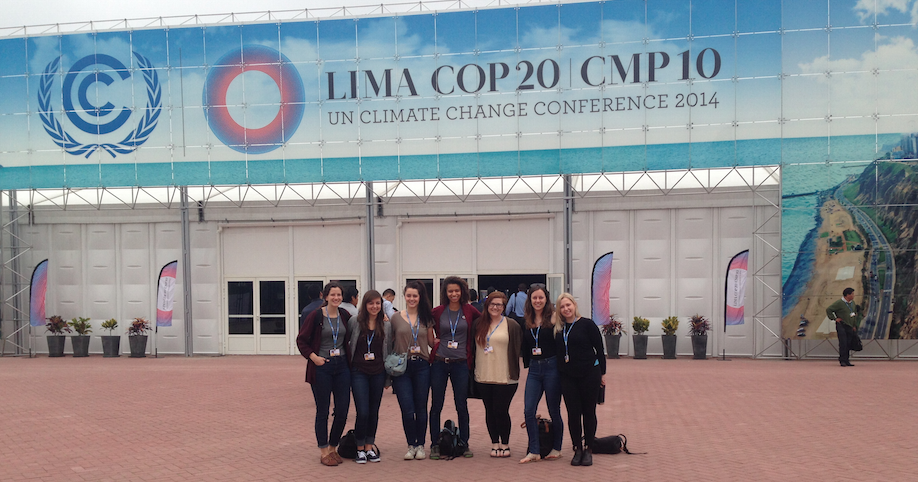Today, the COP 20 UN Climate Negotiations in Lima begin. As part of the lead-up to a global climate agreement next year in Paris, governments around the world will be discussing their commitments for emissions reduction targets. These commitments are slated to come in the form of intended nationally-determined contributions (INDCs) and are due in March 2015 — three short months from now. Canada’s most recent ADP submission, a key document that will help shape our INDCs, avoids any mention of the tar sands and our increasing inability to meet emissions targets, and outlines only a handful of inadequate “solutions.” Here are the highlights, or should we say lowlights, from the dismal proposal. Spoiler alert: brace yourselves for some serious face palms.
Coal, oil, and natural gas
In the proposal, the Canadian government boasts that it would be “pleased to elaborate on [its] experience with coal fired regulations.” Sure, we’ve cut down on emissions from coal by 24.1 per cent, but overall Canada’s carbon emissions are expected to surge by almost a third by 2020. So why aren’t we talking about the oil-covered elephant in the room? The Canadian government is trying its best to conceal emissions from the oil and gas sector, which it fervently supports. According to an April 2014 report quietly released by Environment Canada, oil and gas has surpassed transportation as Canada’s largest source of greenhouse gases.
Unconventional oil and gas developments like the tar sands and fracking mean we are nowhere near reaching our already insufficient and unambitious emissions reductions targets. In fact, emissions from oil have increased by 27.4 per cent in Canada since 1990, and natural gas emissions have jumped by 57.0 per cent in the same time period. Between 2010 and 2020 alone, tar sands emissions are expected to more than double. From 2005 levels, they will triple. Let’s focus on those rising emissions instead of boasting about Canada’s emissions reductions from coal.
Carbon capture and storage
In its proposal, Canada also claims to be an authority on carbon capture and storage (CCS) — the complicated process of capturing, compressing, and storing CO2. In case you were starting to believe the government is actually trying to be environmentally friendly, don’t be duped: CCS is basically an advanced form of greenwashing that uses the sequestered CO2 to pump barrels of oil from the ground. That’s right, folks — with CCS fossil fuels can be exploited at a higher rate! This unproven technology also faces major barriers when it comes to actual implementation, which is possibly why it has never been successfully executed before. To make matters worse, it is considered to be the most expensive form of greenhouse gas mitigation — retrofitting just a single coal plant in Saskatchewan with CCS costs $1.4 billion. Even Brad Page, Chief Executive of the Global CCS Institute — ostensibly one of CCS’s biggest fans — has expressed doubt that it is ready to be replicated on a larger scale. Yet Canada has already spent up to $4.5 billion on carbon capture and storage research and development. Instead of investing billions of dollars in controversial CCS technology, we suggest investing in proven energy solutions like wind, solar and tidal, which are currently massively underutilized and underfunded in the country.
Short-lived climate pollutants (say what?!)
Moreover, the Canadian proposal fails to properly address the country’s CO2 emissions, stating instead, “It would be useful to focus … on action to address short-lived climate pollutants (SLCPs), an area … that offers considerable potential to enhance our global ambition.”
Taking up just a small part of greenhouse gas emissions today, SLCPs are expected to make up only 19 per cent of GHGs by 2020. Given that coal only accounts for 11 per cent of emissions in Canada, it is safe to assume that this proposal fails to establish emissions reduction plans for the majority of emissions in Canada.
Smoke and Mirrors
We deserve better from the Canadian government. We deserve a government that is accountable and transparent about its greenhouse gas emissions — one that doesn’t hide its massive failures behind practices and policies aimed at dodging climate accountability. We deserve a Canada that will step up and deliver a proposal by March 2015 that is in line with the emissions reduction targets we need to keep warming below the 2 degrees Celsius increase that governments agreed to under the Copenhagen Accord in 2009.
Thanks for coming out, Canada, but we’re still waiting for a real proposal.



